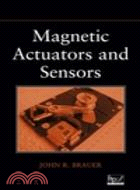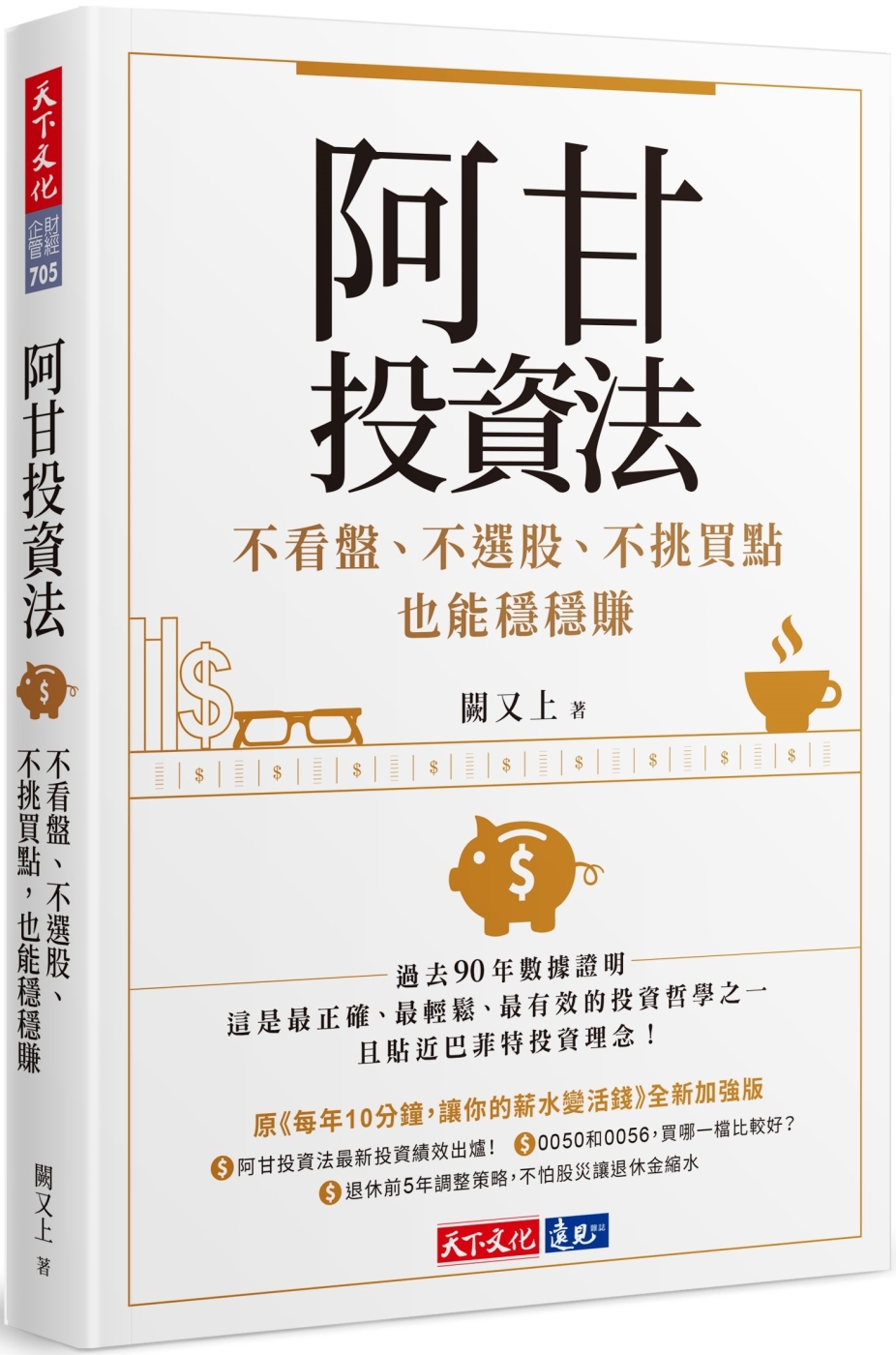| FindBook |
有 1 項符合
MAGNETIC ACTUATORS AND SENSORS的圖書 |
 |
MAGNETIC ACTUATORS AND SENSORS 作者:BRAUER 出版社:JOHN WILEY & SONS,INC. 出版日期:2006-01-01 |
| 圖書館借閱 |
| 國家圖書館 | 全國圖書書目資訊網 | 國立公共資訊圖書館 | 電子書服務平台 | MetaCat 跨館整合查詢 |
| 臺北市立圖書館 | 新北市立圖書館 | 基隆市公共圖書館 | 桃園市立圖書館 | 新竹縣公共圖書館 |
| 苗栗縣立圖書館 | 臺中市立圖書館 | 彰化縣公共圖書館 | 南投縣文化局 | 雲林縣公共圖書館 |
| 嘉義縣圖書館 | 臺南市立圖書館 | 高雄市立圖書館 | 屏東縣公共圖書館 | 宜蘭縣公共圖書館 |
| 花蓮縣文化局 | 臺東縣文化處 |
|
|
- 圖書簡介
This practical text features computer-aided engineering methods for the design and application of magnetic actuators and sensors, using the latest software tools. John Brauer highlights the use of the electromagnetic finite element software package Maxwell? SV and introduces readers to applications using SPICE, MATLAB?, and Simplorer?. A free download of Maxwell? SV is available at the Ansoft site, and the software files for the examples are available at ftp://ftp.wiley.com/public/sci_tech_med/magnetic_actuators.
The text is divided into four parts:
* Part One, Magnetics, offers an introduction to magnetic actuators and sensors as well as basic electromagnetics, followed by an examination of the reluctance method, the finite element method, magnetic force, and other magnetic performance parameters
* Part Two, Actuators, explores DC actuators, AC actuators, and magnetic actuator transient operation
* Part Three, Sensors, details Hall effect and magnetoresistance as they apply to sensing position. Readers are introduced to many other types of magnetic sensors
* Part Four, Systems, covers aspects of systems common to both magnetic actuators and sensors, including coil design and temperature calculations, electromagnetic compatibility, electromechanical finite elements, and electromechanical analysis using system models. The final chapter sets forth the advantages of electrohydraulic systems that incorporate magnetic actuators and/or sensors
A major thrust of this book is teaching by example. In addition to solved examples provided by the author, problems at the end of each chapter help readers to confirm their understanding of new skills and techniques. References, provided in each chapter, help readers explore particular topics in greater depth.
With its emphasis on problem solving and applications, this is an ideal textbook for electrical and mechanical engineers enrolled in upper-level undergraduate and graduate classes in electromechanical engineering. - 目次
Preface.
PART I MAGNETICS.
1. Introduction.
1.1 Overview of Magnetic Actuators.
1.2 Overview of Magnetic Sensors.
1.3 Actuators and Sensors in Motion Control Systems.
References.
2. Basic Electromagnetics.
2.1 Vectors.
2.1.1 Gradient.
2.1.2 Divergence.
2.1.3 Curl.
2.2 Ampere’s Law.
2.3 Magnetic Materials.
2.4 Faraday’s Law.
2.5 Potentials.
2.6 Maxwell’s Equations.
Problems.
References.
3. Reluctance Method.
3.1 Simplifying Ampere’s Law.
3.2 Applications.
3.3 Fringing Flux.
3.4 Complex Reluctance.
3.5 Limitations.
Problems.
References.
4. Finite-Element Method.
4.1 Energy Conservation and Functional Minimization.
4.2 Triangular Elements for Magnetostatics.
4.3 Matrix Equation.
4.4 Finite-Element Models.
Problems.
References.
5. Magnetic Force.
5.1 Magnetic Flux Line Plots.
5.2 Magnetic Energy.
5.3 Magnetic Force on Steel.
5.4 Magnetic Pressure on Steel.
5.5 Lorentz Force.
5.6 Permanent Magnets.
5.7 Magnetic Torque.
Problems.
References.
6. Other Magnetic Performance Parameters.
6.1 Magnetic Flux and Flux Linkage.
6.1.1 Definition and Evaluation.
6.1.2 Relation to Force and Other Parameters.
6.2 Inductance.
6.2.1 Definition and Evaluation.
6.2.2 Relation to Force and Other Parameters.
6.3 Capacitance.
6.3.1 Definition.
6.3.2 Relation to Energy and Force.
6.4 Impedance.
Problems.
References.
PART II ACTUATORS.
7. Magnetic Actuators Operated by Direct Current.
7.1 Solenoid Actuators.
7.1.1 Clapper Armature.
7.1.2 Plunger Armature.
7.2 Voice Coil Actuators.
7.3 Other Actuators Using Coils and Permanent Magnets.
7.4 Proportional Actuators.
7.5 Rotary Actuators.
Problems.
References.
8. Magnetic Actuators Operated by Alternating Current.
8.1 Skin Depth.
8.2 Power Losses in Steel.
8.2.1 Laminated Steel.
8.2.2 Equivalent Circuit.
8.2.3 Solid Steel.
8.3 Force Pulsations.
8.3.1 Force with Single AC Coil.
8.3.2 Force with Added Shading Coil.
8.4 Cuts In Steel.
8.4.1 Special Finite-Element Formulation.
8.4.2 Loss and Reluctance Computations.
Problems.
References.
9. Magnetic Actuator Transient Operation.
9.1 Basic Timeline.
9.2 Size, Force, and Acceleration.
9.3 Linear Magnetic Diffusion Times.
9.3.1 Steel Slab Turnon and Turnoff.
9.3.2 Steel Cylinder.
9.4 Nonlinear Magnetic Diffusion Time.
9.4.1 Simple Equation for Steel Slab with “Step” B–H.
9.4.2 Transient Finite-Element Computations for Steel Slabs.
9.4.3 Simple Equation for Steel Cylinder with “Step” B–H.
9.4.4 Transient Finite-Element Computations for Steel Cylinders.
Problems.
References.
PART III SENSORS.
10. Hall Effect and Magnetoresistive Sensors.
10.1 Simple Hall Voltage Equation.
10.2 Hall Effect Conductivity Tensor.
10.3 Finite-Element Computation of Hall Fields.
10.3.1 Unsymmetric Matrix Equation.
10.3.2 2D Results.
10.3.3 3D Results.
10.4 Toothed Wheel Hall Sensors for Position.
10.5 Magnetoresistance.
10.5.1 Classical Magnetoresistance.
10.5.2 Giant Magnetoresistance.
10.5.3 Newest Forms of Magnetoresistance.
10.6 Magnetoresistive Heads for Hard-Disk Drives.
Problems.
References.
11. Other Magnetic Sensors.
11.1 Speed Sensors Based on Faraday’s Law.
11.2 Inductive Recording Heads.
11.3 Proximity Sensors Using Impedance.
11.3.1 Stationary Eddy Current Sensors.
11.3.2 Moving Eddy Current Sensors.
11.4 Linear Variable Differential Transformers.
11.5 Magnetostrictive Sensors.
11.6 Flux Gate Sensors.
11.7 Magnetometers and Motes.
Problems.
References.
PART IV SYSTEMS.
12. Coil Design and Temperature Calculations.
12.1 Wire Size Determination for DC Currents.
12.2 Coil Time Constant and Impedance.
12.3 Skin Effects and Proximity Effects for AC Currents.
12.4 Finite-Element Computations of Temperatures.
12.4.1 Thermal Conduction.
12.4.2 Thermal Convection and Thermal Radiation.
12.4.3 AC Magnetic Device Cooled by Conduction, Convection, and Radiation.
Problems.
References.
13. Electromagnetic Compatibility.
13.1 Signal-to-Noise Ratio.
13.2 Shields and Apertures.
13.3 Test Chambers.
13.3.1 TEM Transmission Lines.
13.3.2 TEM Cells.
13.3.3 Triplate Cells.
Problems.
References.
14. Electromechanical Finite Elements.
14.1 Electromagnetic Finite-Element Matrix Equation.
14.2 0D and 1D Finite Elements for Coupling Electric Circuits.
14.3 Structural Finite-Element Matrix Equation.
14.4 Force and Motion Computation by Timestepping.
14.5 Typical Electromechanical Applications.
14.5.1 DC Solenoid with Slowly Rising Input Current.
14.5.2 DC Solenoid with Step Input Voltage.
14.5.3 AC Clapper Solenoid Motion and Stress.
14.5.4 Transformers with Switches or Sensors.
Problems.
References.
15. Electromechanical Analysis Using Systems Models.
15.1 Electric Circuit Models of Magnetic Devices.
15.1.1 Electric Circuit Software Including SPICE.
15.1.2 Simple LR Circuits.
15.1.3 Tables of Nonlinear Flux Linkage and Force.
15.1.4 Analogies for Rigid Armature Motion.
15.1.5 Maxwell SPICE Model of Bessho Actuator.
15.1.6 Simplorer Model of Bessho Actuator.
15.2 VHDL-AMS/Simplorer Models.
15.2.1 VHDL-AMS Standard IEEE Language.
15.2.2 Model of Solenoid Actuator.
15.3 MATLAB/Simulink Models.
15.3.1 Software.
15.3.2 MATLAB Model of Voice Coil Actuator.
15.4 Including Eddy Current Diffusion Using a Resistor.
15.4.1 Resistor for Planar Devices.
15.4.2 Resistor for Axisymmetric Devices.
Problems.
References.
16. Coupled Electrohydraulic Analysis Using Systems Models.
16.1 Comparing Hydraulics and Magnetics.
16.2 Hydraulic Basics and Electrical Analogies.
16.3 Modeling Hydraulic Circuits in SPICE.
16.4 Electrohydraulic Models in SPICE and Simplorer.
16.5 Hydraulic Valves and Cylinders in Systems Models.
16.5.1 Valves and Cylinders.
16.5.2 Use in SPICE Systems Models.
16.6 Magnetic Diffusion Resistor in Electrohydraulic Models.
Problems.
References.
Appendix: Symbols, Dimensions, and Units.
Index.
|











